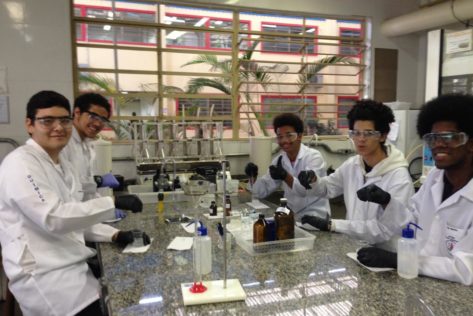
The main flocculant agent used in the water and wastewater treatment process is the polyacrylamide, of which monomers are highly toxic. The purpose of this project is to solve this problem by evaluating the behavior of the bioflocculant pectin extracted from the orange peel. The pectin extraction was made by the citric acid and characterized the obtained material with the degree of esterification (DE) and galacturonic acid content (GAC) with neutralization volumetric method. Flocculation tests were made in synthetic residual water considering 3 values of initial pH: 3.3; 7.8 and 10.6. In pH 10.6, all the samples presented flocculation activities better than 90%, that is, is the most favorable to the pectin flocculation process.
This is how I came up with the idea for this project:"The idea came from a desire for improvement within the water treatment process, so we identified a problem and went after possible solutions"

Documentation
Bioflocculant pectin activity extracted from the orange peel (Citrus sinensis (L.) Osbeck) for wastewater treatment The main flocculant agent used in the water and wastewater treatment process is the polyacrylamide, of which monomers are highly toxic. The purpose of this project is to solve this problem by evaluating the behavior of the bioflocculant pectin extracted from the orange peel. The pectin extraction was made by the citric acid and characterized the obtained material with the degree of esterification (DE) and galacturonic acid content (GAC) with neutralization volumetric method. Flocculation tests were made in synthetic residual water considering 3 values of initial pH: 3.3; 7.8 and 10.6. In pH 10.6, all the samples presented flocculation activities better than 90%, that is, is the most favorable to the pectin flocculation process.